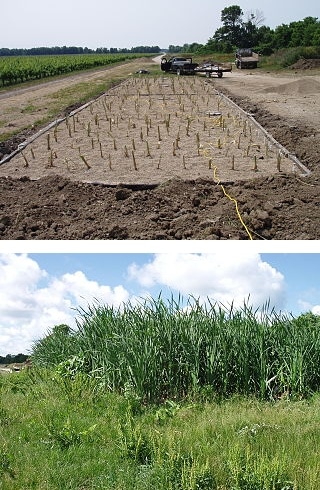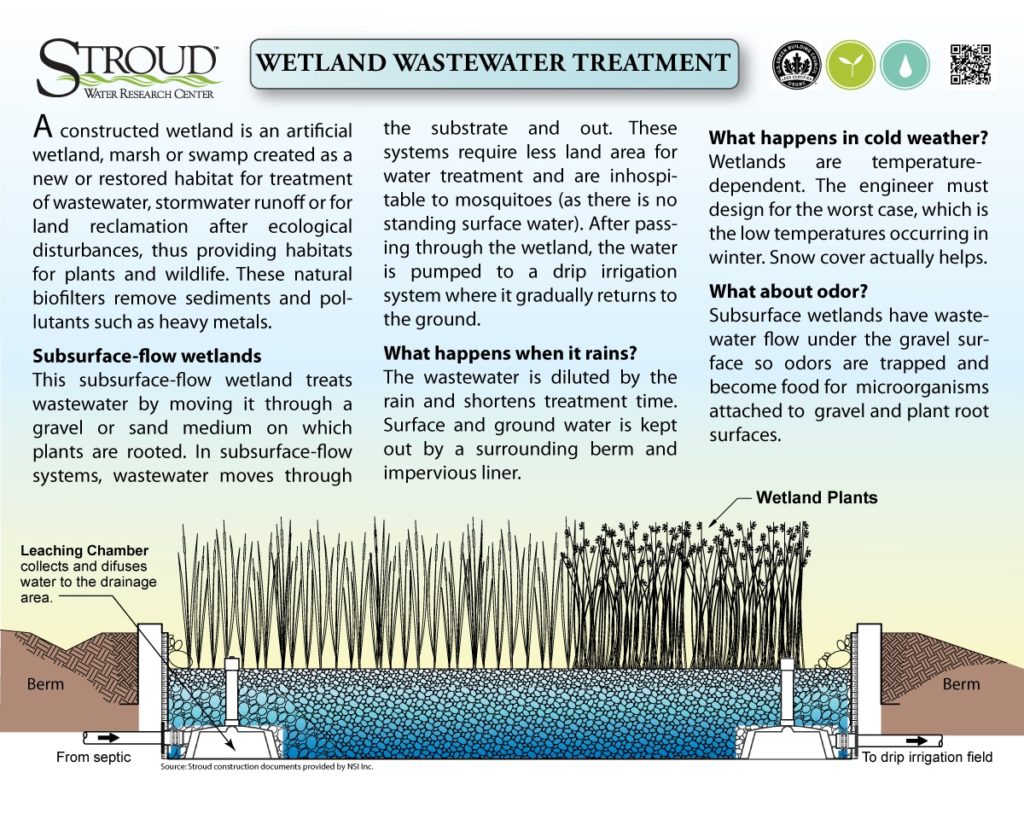Wetland Wastewater Treatment

A newly planted constructed wetland (top) and the same site two years later.
A “constructed” wetland? Can this really work?
We know that natural wetlands are excellent filters, removing pollutants and nutrients as water flows through them toward lakes, rivers, and oceans. Scientists and engineers have sought to replicate many of these natural processes in engineered wetlands.
As of 2004, there were more than 1,000 constructed wetlands in operation in the U.S. and more than 5,000 operating in Europe. When planned, constructed, and maintained properly they have many benefits, including water reuse, and wildlife habitat.
How efficient are these systems at removing heavy metals?
In an EPA study conducted in 2003 on a four-year-old wetland treatment system with 48 hour retention time, the following removal rates were achieved:
- Copper and mercury: greater than 80% removal
- Lead: 83% removal
- Zinc: 60% removal
- Nickel: generally unaffected
What about nutrient removal?
The same study showed that nitrates were removed completely from the water column as soon as it entered the wetland system, and that the anaerobic conditions of the wetland reduced manganese and iron to soluble forms and increased dissolved organic carbon, which is a food source for microorganisms.
How do you maintain a wetland treatment system?
Maintenance is minimal, and consists of making sure that the vegetation is growing well and that water is flowing freely through the system.
Don’t try this at home!
Unlike many of the “green” concepts and materials incorporated our building, a wetland wastewater treatment system requires many layers of certification from design to implementation, including the services of a professional engineer and certified installer.
Sources: Wastewater Treatment and Heavy Metals Removal in the A-01 Constructed Wetland: 2003 Report; Guiding Principles for Constructed Treatment Wetlands: Providing for Water Quality and Wildlife Habitat and Constructed Treatment Wetlands; http://en.wikipedia.org/wiki/Constructed_wetland.

